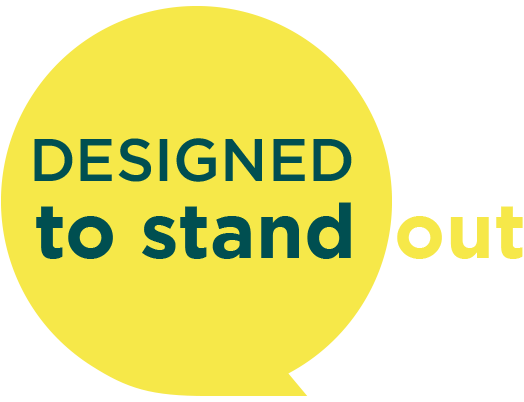Green has always been my favorite color. I think my love for the bright hue started when I was a young girl growing up in a small town in Connecticut where the green colors of nature were absolutely stunning. As time passed, I realized my association with green represents my love for the peace and happiness nature brings.
And I want to help keep it that way!
I’ve felt moments of joy over the past few months reading stories of Mother Nature’s relief as the world quieted during the pandemic. Some of my favorite “silver lining” examples include the clear waters of the Venice Canals caused by the reduction in tourist boat traffic, vistas of the Himalayas seen for the first time in decades with the reduction in air pollution, and daily carbon dioxide emissions dropped 17% globally as traffic reduced.
As we’ve shifted to a world more concerned with safety precautions over environmental efforts, some of the green acts are being challenged, especially in sustainable packaging. In-store refill systems and refill packaging efforts pose risks and are in jeopardy. Many grocery stores have reverted to single-use plastics at check-out in place of shoppers’ reusable tote bags. Starbucks, has paused its use of personal cups in North American outlets, swapping out sustainability for safety.
Does this mean we should stop our efforts toward sustainable initiatives? No! It’s the opposite! It’s now more important than ever for retailers and private brands to take a stand because of the added scrutiny of shoppers.
The COVID-19 crisis has increased consumer trial of store brands and boosted perceptions of private label, paving the way for more consumer acceptance. With this increase in market penetration, private brands can lead by standing for the ideals they believe in. This is the perfect opportunity to show your customers that you care about sustainability and are pursuing it despite the pandemic.
As for retailers, brands are responding with the message of “we’re here to help” as well as detailing how they are supporting employees and customers, which will have an enduring impact on consumer expectations of companies going forward. Now is your chance to also engage your shoppers by showing them the things you value and how you’re making a difference. This will strengthen your relationship with them and build brand loyalty.
My advice to retailers who are just beginning their journey:
1.Get the Info
Look to the companies that have been in the spotlight and notice their approach. Sustainability in the retail space is a hot topic right now so many national retailers are speaking loudly on what they’re doing to show they’re involved and taking a stand. Look to conferences like Packaging Speaks Green and GreenBiz to learn as well. I was fortunate to be involved in the Packaging Speaks Green conference in Italy this year. It was comprised of some of the most innovative sustainability organizations and 500 attendees. The conversations were informative and forward-thinking and confirmed the importance packaging plays in sustainability. A big thank you to Phil Russo and Luisa Columbo for introducing me to this event!
2. Align Internally
As you begin to join the talk, regroup with your internal team and align on your vision of what sustainability looks like for your brand or company as a whole.
3. Set Sustainability Goals
Once you have created SMART (Specific, Measurable, Achievable, Realistic, and Timely) goals, you can set systems into place to work towards your benchmarks. Target has a full department dedicated to their sustainability
efforts. This team is solely focused on making sure Target’s sustainable initiatives are carried out across the company.
4. Get Involved
If you haven’t done so already, I’d suggest you join the following relevant organizations as an easy way to learn and become involved immediately.
- Sustainable Packaging Coalition
- How2Recycle
- One Step Closer (OSC)
- The Recycling Partnership
5. Start the Conversation
Look to your vendors for sustainable innovations. Pose the packaging questions at the start of your conversation. Ask your suppliers, and require answers, to learn about their printing methods, recycling opportunities,
harmful packaging materials (BPA, PFAS, EPS), involvement with certifying agencies (Fairtrade certification, Marine Stewardship Council, Rainforest Alliance etc., How2Recycle etc.)
My life took a turn from that small-town, green grass life, to leading MBD, a global packaging agency who designs and produces thousands of packaging SKUs per year. With such a large output of materials, We feel a responsibility to take a stand for packaging sustainability. At MBD, we developed a process where we start each qualifying new job with these questions:
• Is there a better way to package this item?
• Can the weight or size of the of the packaging be reduced?
• Is the packaging material recycled and/or recyclable?
• If this is plastic, does it have to be? Are there better alternatives?
Whenever possible MBD will design options that demonstrate a more sustainable solution, even if there’s no budget for it. Whether it’s an alternate sustainable concept, a slight adjustment to reduce packaging materials, or an entirely different packaging type, we show it. It may not be enough to change the project’s trajectory, but it shows an awareness and a mindfulness that we’re thinking about this issue and encouraging our clients and partners to invest in it as well.
If I can impart anything on you today, it’s to stay optimistic! We can’t let the current challenges that face green efforts get us down, especially when it comes to packaging. Recent studies show that consumers view sustainability efforts as the responsibility of food and drink companies. Brands must take the lead on sustainability as consumers are looking to manufacturers, retailers and brands to do the good work for them.
We have a long road ahead of us and it’s not going to be an easy journey. We all need to join together and work towards truly making our Packaging Speak Green!
![[Image: logo]](/sites/marketingbydesign/themes/zen_mbdesign_v3/images/asset_nav_mbd_logo@2x.png)
